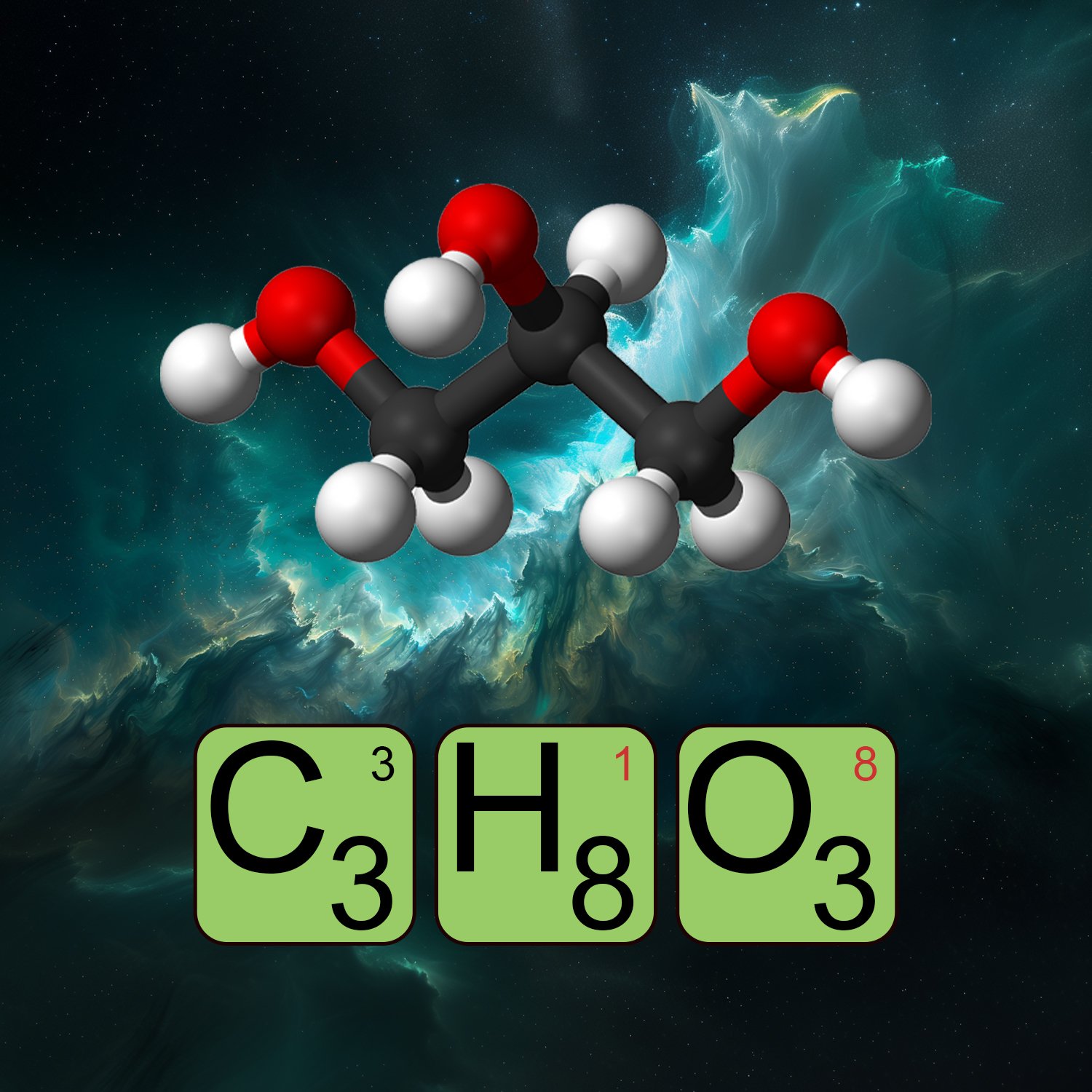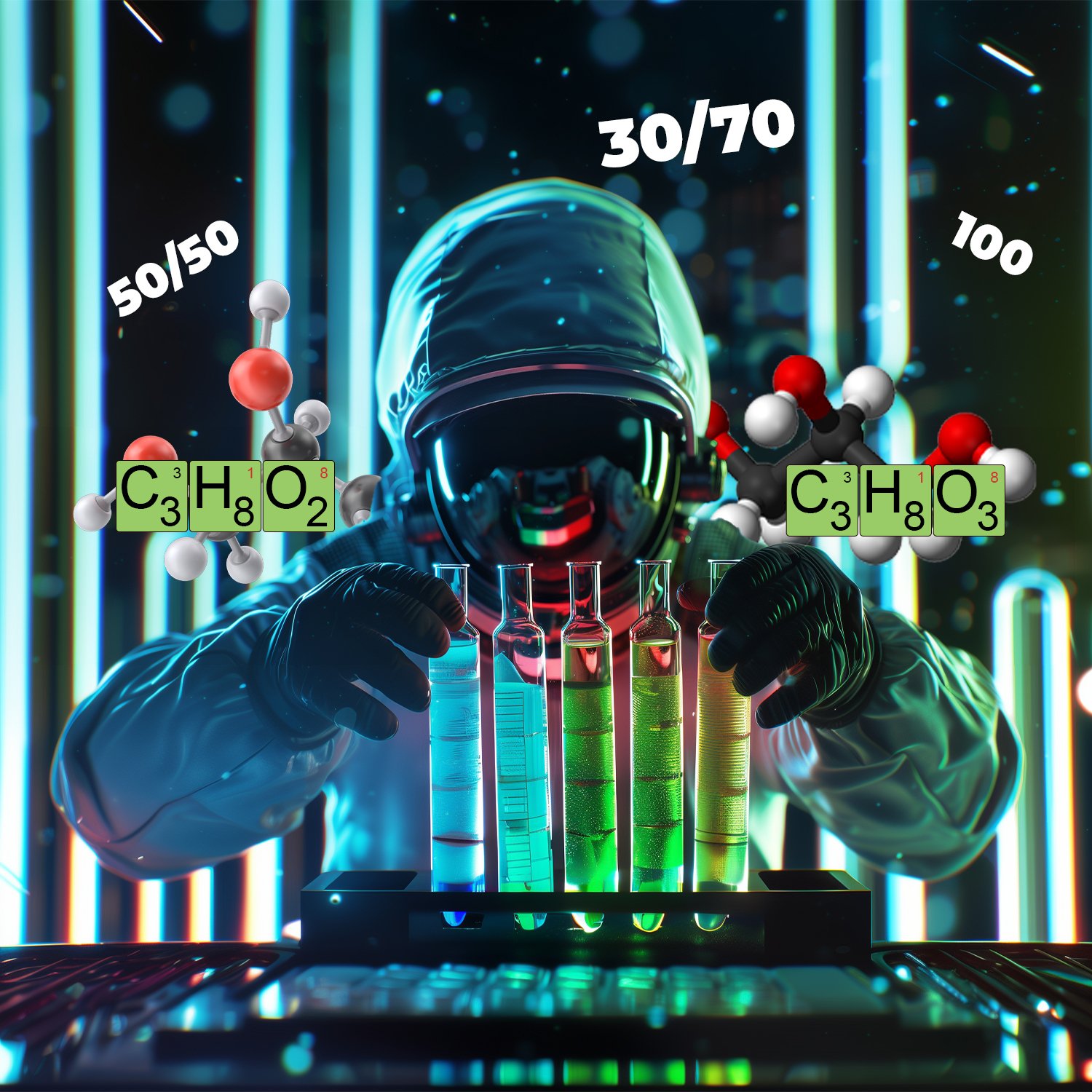SUMMARY
Choosing the right PG/VG ratio is essential for a successful vape experience. The wrong choice of eliquid can lead to undesirable effects and therefore compromise your smoking cessation. That's why Freevap is committed to providing you with the most comprehensive guide possible, so you can choose your future PG/VG ratio with your eyes closed.
What is PG ?


Scientific definition
PG’, as it is often called in vape circles, stands for “propylene glycol”, also known by its scientific names: dihytdroxypropane or methyl glycol.
This organic chemical compound is present in many everyday food products in the form of flavourings: in sauces, drinks and ice creams. It's also not uncommon to find it in the cosmetics and pharmaceutical industries as a preservative, emulsifier or spray.
Is PG dangerous to health?
This raises the legitimate question: is this compound dangerous to health?
Propylene glycol is recognised as ‘non-hazardous to humans and the environment’ by the European Chemicals Agency (ECHA) and also by the Food and Drug Administration (GRAS, Generally Recognised As Safe), provided it's used under the right conditions and in low doses (as in e-liquid, for example). Numerous studies have also shown that it's not carcinogenic, unlike the many substances that make up traditional cigarettes.
Nevertheless, there may be a few side-effects when you vape, such as slight throat irritation for those who are more sensitive. But don't panic, if you're intolerant or even allergic to PG, there's a tried-and-tested natural alternative: vegetol.
NB: Propylene glycol tends to dry out the mouth and throat. In hot weather, be sure to keep well hydrated (more than usual). To find out more on this subject, read our guide ‘E-cigarettes: good practice when the temperature is high’.
Vegetol as an alternative to PG
Vegetol (or propane-1) is recognised as a natural alternative to propylene glycol. This 100% plant-based molecule offers a smoother, softer, irritation-free vape. It also dries out the mouth less, and its composition is certified allergen-free, additive-free and alcohol-free. As well as being healthier, this alternative is also more environmentally friendly (derived from the biofermentation of vegetable glycerine).
Like propylene glycol, it has a number of advantages in terms of vaping, such as better nicotine delivery and better flavour reproduction. Despite its vegetal nature and lack of throat irritation, it manages to maintain a fairly good hit. However, it doesn't deliver the same volume of vapour as propylene glycol. It therefore plays the same key role in the process of giving up smoking, and each of the two components has its advantages and disadvantages. The choice between the two is simply a question of preference and tolerance.
The role of PG in e-liquids
As you will have gathered, propylene glycol is one of the main components of your eliquid.
With its fairly fluid content, it blends perfectly with its more viscous counterpart, vegetable glycerine, which we'll look at in a second section.
So why is PG so important to vape?
Propylene glycol has several key functions:
- Fluidising the liquid
- To preserve the flavour of the aromas and reproduce them in the best possible way
- Provoke the ‘hit’ (scratchy sensation in the throat) which is the same sensation as when you draw on a traditional cigarette. Essential for successful smoking cessation! → To find out more about the importance of hit and nicotine you can consult our guide ‘What nicotine level should you choose for your vape?’.
PG is perfectly compatible with nicotine (high nicotine content) and allows it to be vaporised at low temperatures. An e-liquid with a high PG content will be better suited to low-power electronic cigarettes with a tight draw, such as MTL. These liquids are very popular with beginners looking for sensations similar to cigarettes.
What is GV?


Scientific definition
Known in our industry as ‘VG’, it is actually the term vegetable glycerine that is most commonly used.
Like propylene glycol, vegetable glycerine is used in many fields, including the cosmetics, pharmaceutical and food industries, because of its humectant, moisturising and hygroscopic (moisture-absorbing) properties.
Vegetable glycerine is a viscous, colourless, thick and painless liquid compound that adds a sweet flavour and a certain softness to all your liquids. The vegetable glycerine used to make vaping liquids is pharmaceutical and complies with USP (United States Pharmacopea) or EP (European Pharmacopea) standards. It is also AFNOR XP D-300-2 certified, meaning that it contains a minimum of 99.5% glycerol (its main molecule).
This substance has been recognised as safe by several authorities (FDA or Generally Recognised As Safe, for example). However, above a certain temperature (350°C), there is a risk of degrading vegetable glycerine and creating undesirable compounds, particularly during a ‘dry hit’.
To find out more about this phenomenon, its effects and how to avoid it, you can consult our guide ‘Why does my electronic cigarette taste burnt?’ and follow the manufacturers' recommendations in terms of the power range of your coils. Once these conditions have been met, your coils should not overheat and you will preserve their lifespan.
NB: Despite its safe composition, some people may be sensitive or allergic to vegetable glycerine. If this is your case, you may experience skin reactions or throat irritation. You'll need to stop vaping and consult a doctor. However, this allergy is less common than that to propylene glycol, and allergy sufferers are generally aware of its use in cosmetic products.
The properties of VG in e-liquid
Due to its water content, vegetable glycerine vaporises at 290°C and produces a beautiful vapour. The main property of this substance is therefore to create a dense, thick vapour. Without VG, there's no abundant vapour!
As explained above, vegetable glycerine will add roundness to your eliquids, but it's not what will deliver the flavours and the hit. For this to be perfect, it needs to be combined with propylene glycol.
Different PG/VG ratios


There are a multitude of different PG/VG ratios in vape, and it's not always easy to make a choice. In this guide, we'll try to help you choose your future juice.
A high PG ratio: between 70/30 and 100%PG
As you can see, propylene glycol is perfect for delivering great flavour and a throat hit. The higher the PG level (70% to 100%), the more pronounced the hit. However, vapour production will be less abundant, or even very low.
These ratios are ideal for beginners looking to successfully give up smoking and are suited to MTL-type material.
NB: Beware, however, of the 100%PG ratio, which can lead to a drier mouth and more leaks (depending on the coil chosen). It is nevertheless ideal for those who want to say goodbye to cigarettes for good and boost their withdrawal.
A balanced ratio: 50/50
The 50/50 PG/VG rate is undoubtedly the easiest rate for starting out in vaping. The perfect balance between flavour, hit and vapour will allow you to discover your vape preferences step by step and to orientate yourself towards a rate suited to your preferences and needs.
This rate is largely represented in nicotine salt e-liquids, which are ideal for effective smoking cessation. To find out more about nicotine salt e-liquids and their properties, take a look at our ‘Nicotine salt e-liquids’ guide.
What's more, this ratio allows you to adapt to most materials on the market (DL or MTL).
A high VG ratio: between 20/80 and 100%VG
A high VG ratio is ideal for lovers of dense vapour, a practice sometimes called ‘cloud chasing’ or ‘power vaping’. The advantage of this ratio is that you won't have to lower the power of your equipment and will be able to use sub-ohm (high-wattage) material.
- The 30PG/70VG and 25PG/75VG ratios are ideal if you want to make big clouds but still retain a certain throat hit.
- From 20PG/80VG, you'll see a denser vapour and the hit will gradually disappear.
- For ‘high VG’ or ‘full VG’ ratios (10PG/90VG or 100%VG) the vapour will be considerable and you'll be able to make big clouds! On the other hand, the hit is almost non-existent.
NB: Be careful, however, as high levels of vegetable glycerine clog up your coil more quickly, which means they need to be changed more regularly. This can be an economic disadvantage.
How do I select my PG/VG ratio?


In the light of what has been explained above, the PG/VG ratio you choose will depend on your preferences to begin with, but also on the material you use.
The material used
As you can see, the PG/VG ratio of your future eliquid will depend heavily on the tank or kit you use. If you opt for material designed for ‘indirect inhalation’ or MTL (low power), you'll need to use ratios of between 50PG/50VG and 100%PG and use specific coils (with narrow inlets so as not to soak the cotton too quickly and cause leaks) generally above 1 ohm.
On the other hand, if you prefer sub-ohm or DL material, you'll need to adapt your power to e-liquids with a higher VG content. The coils used will be lower in terms of ohms and will have wider inputs (to compensate for the thickness of the vegetable glycerine).
The 50PG/50VG ratio is suitable for most material on the vape market.
The type of coil is very important, as the wrong choice could result in a dry hit or undesirable leaks.
My vaping profile and preferences
The choice of your future PG/VG ratio will also depend on your profile, your needs and your preferences, of course.
Whether you're a fan of big clouds, a newcomer to vaping looking for an effective way to give up smoking, or an intermediary who has already made great strides in the fight against smoking, profiles are diverse and varied, which is why there is no single PG/VG ratio.
To sum up, the higher the proportion of propylene glycol in your liquid, the greater the hit and the better the flavour reproduction, and the higher the amount of vegetable glycerine, the denser and more abundant the vapour. All that's left is to choose sides!
Whether or not you choose to DIY will also influence your choice.
If you'd like to find out more on this subject and on the choice of PG/VG ratios in the DIY field, you can consult our guide ‘All about DIY e-liquid’.




